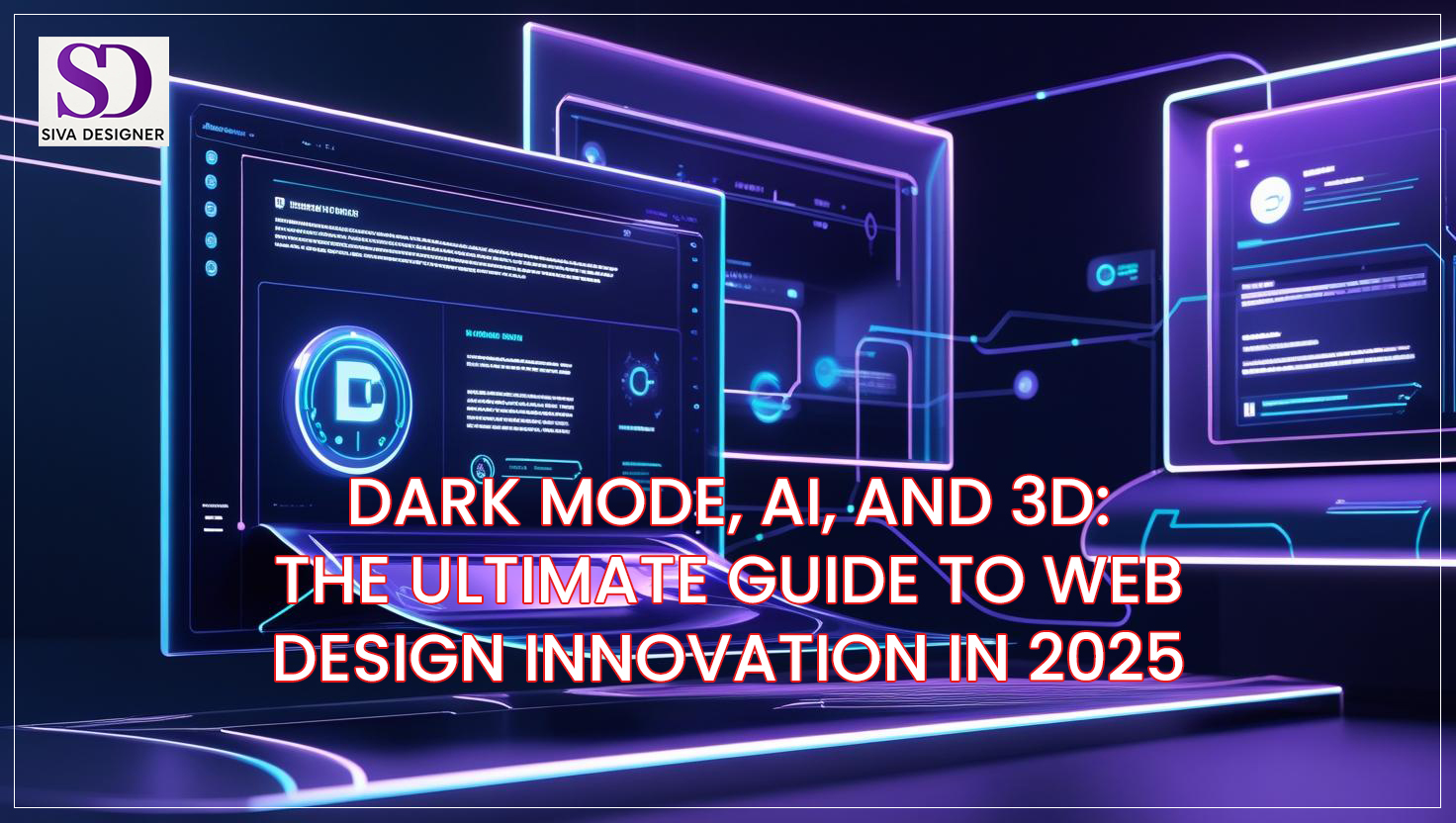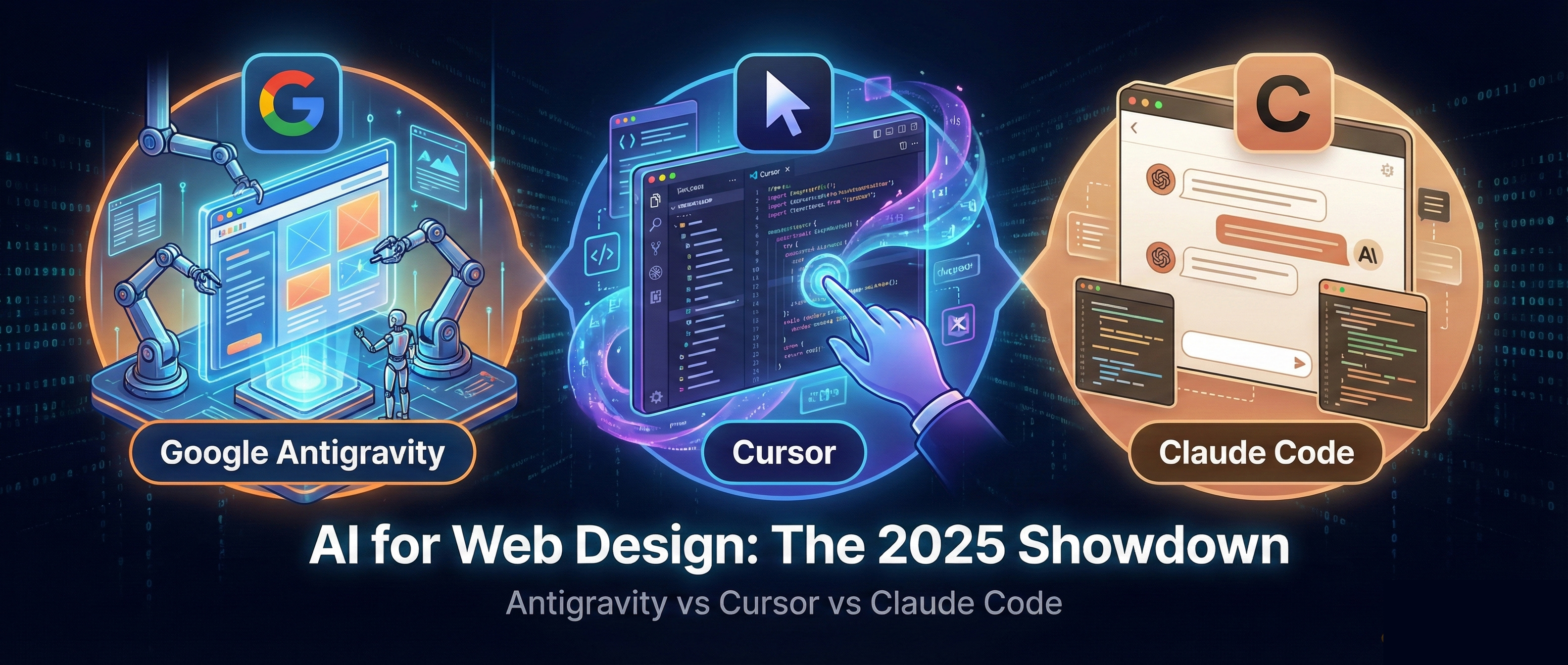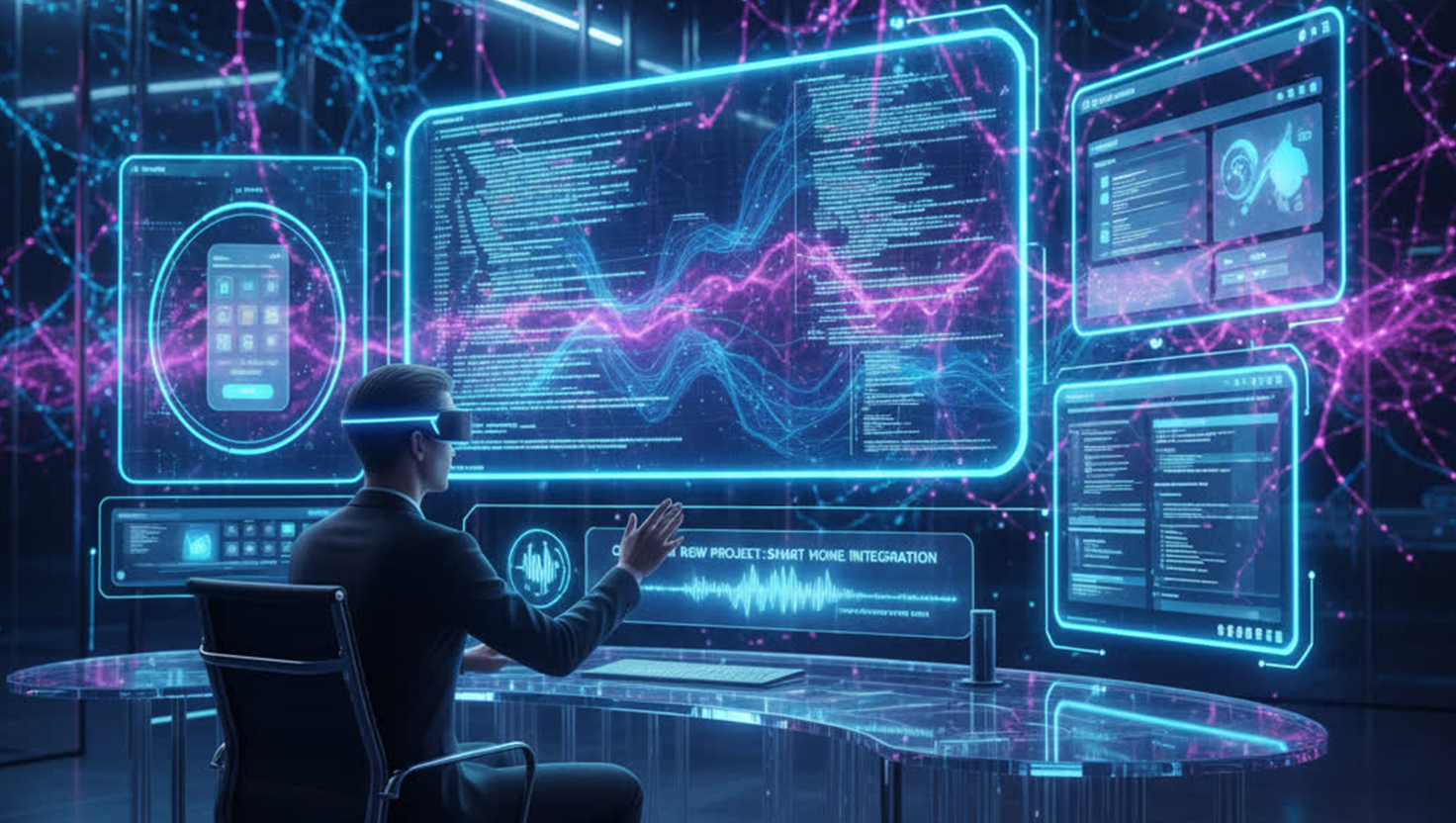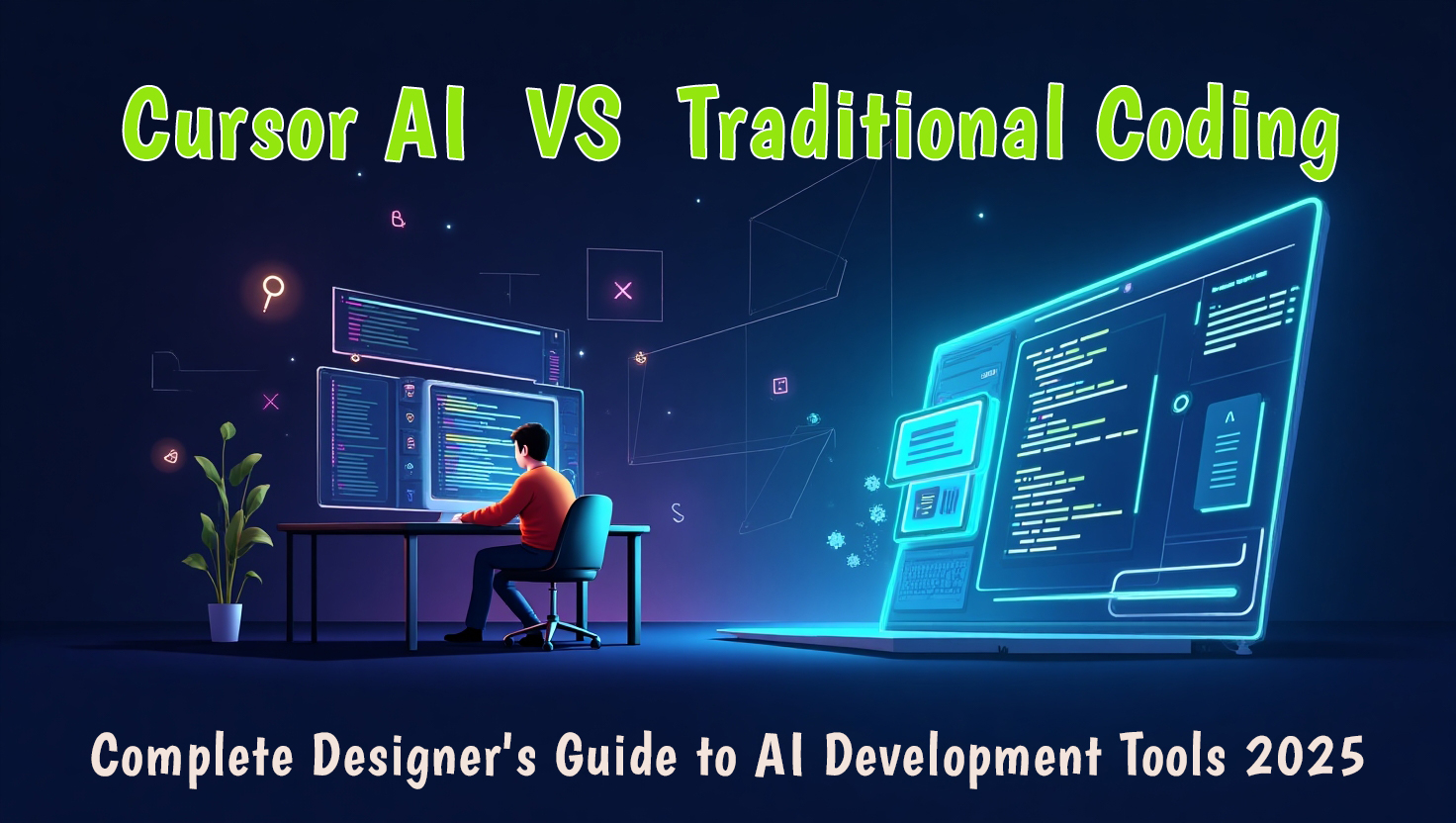Introduction
Why Web Design Matters More Than Ever in 2025
Let's face it - web design in 2025 is no longer just about making a site look good. It's about creating a whole experience. You've got less than 5 seconds to impress visitors. And if your website looks outdated or loads slowly? People bounce. That's where innovation comes in. Things like dark mode, AI-driven layouts, and eye-catching 3D visuals aren't just trends - they're expectations.
We're living in a time where attention spans are short, devices are smarter, and people demand smoother, faster, more personalized digital experiences. If your website doesn't meet expectations, visitors will quickly move on to a competitor's. This guide is here to show you how dark mode, AI, and 3D can bring your web design up to speed - and even ahead of the curve. Ready to dive in?
The Rise of Dark Mode
What is Dark Mode and Why Everyone Loves It
Dark mode is more than just flipping the background from white to black. It's a whole vibe. Think of it as night mode for your eyes. It uses dark backgrounds with light text to reduce glare, save battery on OLED screens, and honestly - it just looks sleek. It's everywhere now. From social media apps like Instagram and Twitter to business tools like Slack and Notion.
People love it for a reason. Dark mode feels modern, futuristic, and stylish. But it's also easy on the eyes, especially in low-light environments. This makes it perfect for users who spend hours scrolling, reading, or working online.
Designers are loving it too. With dark mode, color contrast can really pop. Bold elements like neon highlights, deep purples, and electric blues come alive. Websites with strong branding benefit from how well dark mode emphasizes logos and CTAs.
And it's not just a desktop thing. With mobile-first design in focus, many users set their phones to dark mode by default. If your website doesn't support it, you're giving users a broken experience. Offering both light and dark options is now a basic UX standard.
UX and Health Benefits of Dark Mode
The UX benefits of dark mode go way beyond aesthetics. Let's talk user comfort. Staring at bright screens for hours causes eye fatigue. Dark mode reduces that strain. It makes reading content for long periods less tiring. People feel it. And when users feel comfortable, they stay longer and come back more often.
There's also a health angle. For folks dealing with photophobia (light sensitivity), migraines, or even insomnia, dark mode helps minimize triggers. It's not a cure-all, but it's a big step in user-first design. Plus, dark mode can help reduce blue light exposure at night, which might improve sleep patterns for night-time scrollers.
Want to save battery life? Dark mode is especially helpful on OLED screens, where dark pixels are actually turned off. Less power use means longer battery life, and mobile users love that.
Accessibility-wise, dark mode still needs careful planning. Not every color combo works. It's essential for designers to use sufficient contrast so that all text remains easy to read. But when done right? It boosts usability without sacrificing style.
How to Implement Dark Mode Right
The dark mode trend isn't just about switching colors. You need a smart approach. First off, use CSS media queries like prefers-color-scheme. This lets your website automatically switch based on user system settings. It's seamless and smart.
Tools to Try:
- Tailwind CSS and Material-UI (for built-in dark mode support)
- Darkreader (for browser-based testing)
Next, think about your brand. Don't just invert your current design. Create a dark mode palette that feels natural to your identity. Use muted backgrounds, avoid pure black (use deep grays instead), and highlight key elements with colors that shine against the dark.
Testing matters. Try your dark theme on different devices, browsers, and lighting conditions. Make sure your fonts remain readable and your visuals maintain clarity. Use tools like Chrome DevTools to toggle modes and see how everything adapts.
Don't forget about toggles. Let users switch manually between light and dark. Give them control. Store their preference using local storage so it remembers their choice.
SEO Tip:
Optimize your dark mode for accessibility and include alt text for images to help with search rankings.
Dark mode is a design upgrade, but only if it's done right. Rush it, and you'll hurt readability, confuse users, or break layout elements. Nail it, and you'll offer a modern, comfortable experience that users love.
Artificial Intelligence in Web Design
AI Tools That Are Changing Web Design
AI is no longer just a buzzword. By 2025, artificial intelligence is revolutionizing the way websites are created, structured, and interacted with. From design assistance to content automation, AI tools are taking over tasks that once required entire teams. Platforms like Wix ADI and Bookmark use AI to build websites in minutes. All you do is answer a few questions, and boom - your site's ready.
But AI doesn't stop there. Tools like Uizard and Framer use AI to help turn sketches into functioning wireframes. You don't need to know code or even have a design background. AI helps beginners build like pros.
Then there's the magic of copy generation. Need a headline? A CTA? Tools like Jasper and ChatGPT can generate compelling copy for you in seconds. They understand tone, structure, and even SEO.
Web development platforms are also using AI to optimize layout, spacing, and even animation timing. It's almost like having a professional designer and coder available whenever you need them. These tools save time, cut costs, and reduce errors. So whether you're a freelancer, agency, or business owner, AI can be your secret weapon.
SEO Keywords:
AI web design tools 2025, AI in UX design, automated website design
Personalized User Experience Through AI
One of the coolest things AI brings to web design is personalization. Websites no longer have to look the same for every visitor. AI analyzes how people use your site and instantly tailors content to match each visitor's preferences. It can recommend products, change layouts, or even rewrite text based on what a user likes.Case Study:
E-commerce platforms like Amazon use AI to suggest products based on browsing and purchase history, increasing conversions and user satisfaction.
AI also helps with voice interactions. As more people use voice search and smart speakers, AI makes websites smarter and voice-friendly. It can analyze spoken input and deliver relevant answers instantly.
In short, AI-driven personalization makes websites feel alive. Visitors don't just browse - they interact with an experience tailored just for them.
Automating Design Without Losing Creativity
Now, some folks worry that AI might kill creativity. But here's the thing - it doesn't replace designers. It empowers them. AI handles the boring stuff: resizing images, aligning elements, suggesting color combos. That means designers can focus on the fun part - the creative direction.
Want to try different layouts fast? AI-powered tools can mock up several versions in seconds. They analyze user data and design trends to suggest what might work best. This saves hours of testing and guesswork.
But you still make the final call. AI doesn't create art out of thin air - it works with what you give it. Think of it like a design assistant that never sleeps. It handles the technical bits while you focus on storytelling and branding.
Pro Tip:
Combine AI tools with human insight for the best results. Use Adobe Sensei for creative automation or Uizard for rapid prototyping.
The Impact of 3D Elements in Modern Websites
How 3D Design Enhances Visual Experience
In 2025, websites are no longer just flat screens of text and images. Thanks to 3D design, they're becoming immersive experiences. When you land on a site with smooth 3D animations, depth effects, or interactive product models, it feels futuristic - and fun. That's the power of 3D. It adds realism, personality, and excitement to a webpage.
Case Study:
Apple's product pages use high-resolution 3D renders to let users explore products from every angle, boosting engagement and trust.
3D isn't just about being flashy. It helps users connect better with content. Let's say you're selling a sneaker. Instead of showing a flat photo, a 360-degree interactive model lets customers spin, zoom, and explore every detail. It boosts trust and engagement. People feel like they're touching the product without leaving their chair.
Tools and Frameworks for 3D Design
You don't need to be a full-blown game developer to add 3D to your website. Today's tools make it way easier - even for beginners.
Popular 3D Tools:
- Three.js (JavaScript library for 3D animations)
- Spline (no-code 3D editor for designers)
- Blender (ideal for producing and exporting custom 3D graphics)
- Rive (for lightweight animated graphics)
- Babylon.js (another robust 3D engine)
SEO Keywords:
3D web design, 3D website examples, 3D elements in UI
Many website builders now support 3D blocks. Webflow, Shopify, and WordPress offer plugins and widgets for simple 3D effects.
Balancing 3D Effects with Performance
3D can make a website stunning, but it also comes with a cost - performance. Overloading your website with heavy 3D files can drastically slow down page load times. That's not good for users or SEO. So how do you keep the balance?
- Optimize your models: Use low-polygon versions and compressed textures (.glTF format).
- Lazy-load 3D content: Show key info first, then load 3D as users scroll.
- Responsive design: Test 3D on all devices.
- Accessibility: Offer options to reduce motion for sensitive users.
- Track performance: Use Google Lighthouse or WebPageTest to spot and fix bottlenecks.
SEO Tip:
Ensuring your 3D visuals load quickly and work well on mobile devices can boost your search engine rankings and keep users engaged.
Merging These Trends for Maximum Impact
Dark Mode + AI + 3D = A Future-Ready Website
Individually, dark mode, AI, and 3D are powerful tools. But when you combine them? That's where the real magic happens. Imagine a site that switches to dark mode based on your device, uses AI to personalize every visit, and lets you interact with products in 3D - all seamlessly.
Real-World Example:
Nike's interactive shoe configurator uses all three: a dark-themed interface, AI-powered style recommendations, and 3D product previews.
These elements complement each other. Dark mode gives your 3D visuals a dramatic stage. AI makes your site smarter and more personal. And 3D grabs attention and keeps visitors curious. The result? Users stick around longer, click more, and leave with a lasting impression.
Actionable Tip:
Start small - add a dark mode toggle, use AI for content suggestions, and experiment with a simple 3D animation on your homepage.
Real-World Examples and Case Studies
- Apple: High-res 3D product renders with dark mode and subtle AI-driven personalization.
- Nike: Interactive 3D shoe builder, dark UI, AI style suggestions.
- Spotify excels by using artificial intelligence to suggest music, offering an attractive dark-themed design, and providing layouts that respond to each listener's preferences.
- Indie brands: Use Webflow, Spline, and ChatGPT to build immersive, smart sites on a budget.
SEO and Performance Considerations
Speed, Accessibility, and Mobile Optimization
Cool features mean nothing if your site takes forever to load. In 2025, speed is still king. Every second of delay increases bounce rates. So if you're adding 3D animations or AI-driven content, you've got to optimize.
- Compress everything: Images (WebP), 3D models (.glb or .glTF), scripts.
- Minify code and enable lazy loading.
- Mobile-first: Over 60% of traffic is mobile - test on all devices.
- Accessibility: Use alt text, semantic HTML, and meet WCAG contrast standards (e.g., alt="3D animation of Nike sneaker").
Tools:
- Google PageSpeed Insights
- Lighthouse
- GTmetrix
Optimizing 3D and Dark Mode for SEO
- Use descriptive alt text for 3D elements and images.
- Ensure dark mode color schemes maintain contrast for readability.
- Test site speed and accessibility regularly.
When done right, 3D, AI, and dark mode won't hurt your SEO - they'll enhance it.
Design Accessibility and Inclusion
Making AI and 3D Design Inclusive
Innovation is great - but not if it leaves people behind. In 2025, inclusive design is not just a nice-to-have; it's a must. As websites get more advanced with AI and 3D, it's important that everyone can use them - regardless of age, ability, or device.
Let's start with AI. AI-driven websites should never assume all users behave the same. Over-personalization can backfire if it blocks people from finding core content. Instead, make your AI features optional. Allow users to reset or adjust recommendations. Also, avoid using only AI-based chat for support - some people need a clear path to human help.
- Use tools like Axe and WAVE for accessibility checks.
- Provide different ways to navigate your site for visitors who may not be able to use interactive 3D features.
- Ensure AI-driven content is understandable for all reading levels.
Ensuring Dark Mode Is Accessible to All
Dark mode is trendy, but accessibility must lead the design. The most common issue? Poor contrast. Just because something looks good doesn't mean it's readable. Always check contrast ratios - text should clearly stand out from the background.
Avoid pure black (#000000) for backgrounds and pure white (#FFFFFF) for text. These extremes can strain the eyes. Instead, go for dark grays and off-whites. They offer a smoother reading experience without sacrificing contrast.
- Maintain high contrast ratios.
- Avoid color combinations that are hard to read for colorblind users.
- Test with WebAIM, Coolors, Deque Coloror similar simulators.
Future-Proofing Your Website in 2025
Keeping Up With Rapid Innovations
Technology moves fast. What's trending now could easily be replaced by something new next year. So how do you keep your site from becoming a digital dinosaur? You build with flexibility in mind.
First, don't hard-code everything. Use frameworks and CMS platforms that are easy to update. Webflow, WordPress, and Jamstack-based sites let you tweak things without rebuilding from scratch. They're fast, flexible, and future-friendly.
Next, stay curious. Stay updated by reading design blogs, joining online workshops, and participating in developer forums.. Trends like spatial interfaces, AR, and even gesture-based navigation are on the rise. Expanding your knowledge base helps you respond quickly to industry changes.
Also, test regularly. Tools like BrowserStack, GTmetrix, and Lighthouse help you spot issues before users do. Check for broken links, slow scripts, and mobile bugs. A future-proof site runs smoothly across browsers, devices, and connections.
Tools, Resources, and Platforms to Watch
To keep your site sharp in 2025, here are some tools and platforms worth watching:
- Spline: easy web-based 3D design.
- Framer: combines AI and design tools for responsive, smart websites.
- Webflow is a powerful website builder that enables you to design custom layouts, add smooth animations, and seamlessly integrate 3D visuals—all without needing to code.
- Jasper and ChatGPT: leverage these AI tools for efficient content creation and user experience writing.
- Three.js: JavaScript library for advanced 3D visuals.
- Google Lighthouse: for testing performance, SEO, and accessibility.
- Figma + FigJam: collaborative UI/UX design tools with plugin support.
- Vercel: deploy modern frontends with performance built in.
Bookmark these. Test them. Use them. And don't be afraid to mix and match based on your needs.
Conclusion
Web design in 2025 is about more than just looks. By embracing dark mode, AI, and 3D, you create sites that are modern, engaging, and ready for the future. Start with one trend, experiment, and keep your users' needs at the center. Web design is evolving rapidly—ensure your website evolves too, so you don't get left behind.




0 Comment(s)
Be the first to leave a comment!